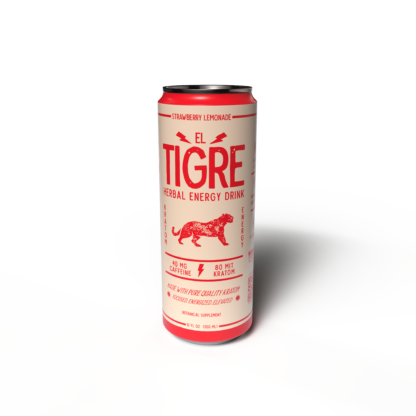Proprioceptive Effects of Kratom Energy Drinks
Kratom, an herbal supplement derived from the Mitragyna speciosa tree, has gained popularity for its purported energizing and pain-relieving effects. The inclusion of kratom in energy drinks raises intriguing questions about its potential impact on proprioception, the sense of body position and movement. Understanding how these beverages influence our awareness of our bodies in space is crucial, as it sheds light on their potential risks and benefits.
Kratom’s Impact on Proprioception
Proprioception, the sense that allows us to perceive our body’s position and movement in space, is crucial for coordinated actions, balance, and overall motor control. Kratom, an herbal supplement known for its energizing and pain-relieving properties, has found its way into energy drinks, raising concerns about its potential effects on proprioception. Studies on kratom’s impact on this sensory system are limited, but preliminary findings suggest a possible influence.
Some research indicates that kratom may alter the perception of touch and body position. This could potentially lead to difficulties with balance, coordination, and fine motor skills, especially when consumed in combination with other stimulants found in energy drinks.
It is important to note that individual responses to kratom can vary significantly depending on factors like dosage, frequency of use, and individual metabolism. More research is needed to fully understand the long-term effects of kratom-containing energy drinks on proprioception and overall motor function.
Mechanism of Action on Sensory Pathways
Kratom’s primary mechanism of action involves interacting with opioid receptors in the brain and body. These receptors are involved in pain perception, mood regulation, and sensory processing, including proprioception.
By activating these receptors, kratom may alter signals transmitted along sensory pathways responsible for conveying information about body position and movement. This could lead to changes in how an individual perceives their body’s location and movement in space.

However, the exact nature of this interaction and its consequences on proprioception require further investigation. Studies are needed to elucidate the specific receptors involved, the dosage ranges that influence proprioception, and the potential long-term effects of chronic kratom consumption on sensory pathways.
Potential Alterations in Muscle Sense and Coordination
Proprioception, the sense of body position and movement, is crucial for coordinated actions and balance. Kratom’s inclusion in energy drinks raises concerns about its potential effects on this sensory system. While research on kratom’s impact on proprioception is limited, preliminary findings suggest a possible influence.
- Some studies indicate that kratom may alter the perception of touch and body position, potentially leading to difficulties with balance, coordination, and fine motor skills.
- Kratom’s mechanism of action involves interacting with opioid receptors in the brain and body, which are involved in sensory processing, including proprioception.
By activating these receptors, kratom may alter signals transmitted along sensory pathways responsible for conveying information about body position and movement. This could lead to changes in how an individual perceives their body’s location and movement in space.
Further research is needed to fully understand the long-term effects of kratom-containing energy drinks on proprioception and overall motor function.

Neurological Considerations
Proprioception, our sense of body position and movement, plays a critical role in everyday activities. This awareness of where our bodies are in space allows for coordinated movements, balance, and fine motor control. The recent inclusion of kratom, an herbal supplement with energizing and pain-relieving properties, in energy drinks has raised concerns about its potential impact on proprioception.
Effects on Dopamine and Serotonin Systems
Kratom’s effects on proprioception are not fully understood. Preliminary research suggests that kratom might influence the sense of body position and movement by interacting with opioid receptors in the brain and body. These receptors play a role in sensory processing, including proprioception.

Activation of these receptors by kratom may alter signals transmitted along sensory pathways responsible for conveying information about body location and movement. This could potentially lead to changes in how an individual perceives their body’s position and movement in space.
Dopamine and serotonin are neurotransmitters implicated in mood, motivation, and sensory perception. Kratom is known to interact with opioid receptors, which have complex connections with dopamine and serotonin systems.
While the precise mechanisms are still being researched, it’s possible that kratom’s influence on opioid receptors could indirectly affect dopamine and serotonin levels, potentially contributing to changes in proprioceptive awareness.
Influence on Motor Control Centers
Proprioception, the sense of body position and movement, relies on a complex interplay of sensory input from muscles, tendons, and joints. These signals are processed in the brain to create a sense of where our body is in space, allowing for coordinated movements, balance, and fine motor skills.
Neurological structures involved in proprioception include the spinal cord, cerebellum, and various areas of the cerebral cortex. Sensory neurons transmit information from muscles and joints to the spinal cord, which relays it to higher brain centers for processing. The cerebellum plays a crucial role in coordinating movements based on proprioceptive input, while the cerebral cortex integrates sensory information with other cognitive functions.
Disruptions to any of these neurological pathways can impact proprioception, leading to difficulties with balance, coordination, and motor control.
Kratom’s potential effects on proprioception remain an area of ongoing research. Its complex interactions with the nervous system, including opioid receptors and neurotransmitter systems like dopamine and serotonin, suggest a possible influence on proprioceptive pathways.
Individual Variability in Response
Proprioception, our sense of body position and movement, is influenced by a complex interplay of neurological structures. Sensory receptors in muscles, tendons, and joints detect changes in muscle length and tension, sending signals to the spinal cord. The spinal cord then relays this information to the cerebellum, which plays a vital role in coordinating movement and balance based on proprioceptive input. Higher brain centers, including various areas of the cerebral cortex, integrate proprioceptive information with other sensory and cognitive functions.
Individual variability in response to kratom is significant and can be influenced by factors such as dosage, frequency of use, genetic predisposition, and existing health conditions. Some individuals might experience subtle changes in proprioception, while others may not notice any effects. This variability underscores the importance of personalized approaches to understanding the potential impacts of substances like kratom on neurological function.
Practical Implications
Understanding the practical implications of kratom’s presence in energy drinks is crucial. This knowledge can inform safer consumption practices and guide public health policies.
Risks for Activities Requiring Proprioception
The potential risks associated with activities requiring proprioception when consuming kratom-containing energy drinks are multifaceted. Difficulty with balance, coordination, and fine motor control could increase the risk of falls, accidents, and injuries during tasks such as walking, running, operating machinery, or participating in sports.
Individuals relying on precise motor skills for their professions, such as surgeons, musicians, athletes, or construction workers, might experience compromised performance due to altered proprioception. Moreover, the combination of kratom with other stimulants found in energy drinks could exacerbate these effects, leading to heightened risks.
It’s crucial to exercise caution when consuming kratom-containing energy drinks, especially for activities demanding precise motor control and balance. Further research is needed to fully understand the long-term consequences of kratom on proprioception and develop informed recommendations for safe consumption practices.
Considerations for Individuals with Existing Neurological Conditions
Individuals with existing neurological conditions should exercise extreme caution when considering kratom-containing energy drinks. Kratom’s potential to influence proprioception, the sense of body position and movement, could exacerbate pre-existing balance issues or motor control difficulties.
Conditions like Parkinson’s disease, multiple sclerosis, or stroke can already affect proprioceptive function, making individuals more susceptible to falls and injuries. Combining these conditions with the potential effects of kratom may increase the risk of complications.
It is crucial for individuals with neurological conditions to consult their healthcare providers before consuming kratom-containing energy drinks. A physician can assess individual health status, potential drug interactions, and advise on the safest course of action.
Further Research Needs
The practical implications of kratom’s inclusion in energy drinks are significant and require careful consideration. Understanding how these beverages affect proprioception is crucial for informing public health policies and promoting safe consumption practices.
Further research is essential to fully elucidate the long-term effects of kratom on proprioception, including its impact on balance, coordination, and fine motor skills. Studies should investigate:
- Specific receptor interactions: Delving deeper into which opioid receptors are involved in kratom’s effects on proprioception.
- Dosage-dependent effects: Determining the range of kratom dosages that influence proprioception and identifying potential thresholds for adverse effects.
- Long-term consequences: Assessing the cumulative impact of chronic kratom consumption on proprioceptive function over time.
- Individual variability: Exploring factors influencing individual responses to kratom, such as genetics, metabolism, and pre-existing health conditions.
- Interactions with other substances: Investigating potential synergistic or antagonistic effects of kratom when combined with other stimulants or medications commonly found in energy drinks.
This research will provide a more comprehensive understanding of the risks and benefits associated with kratom-containing energy drinks, enabling informed decision-making regarding their production, distribution, and consumption.
First-time buyer? Try Just Kratom
Create Cocktails at Home
Doll Chronicles
- Lip Flip Treatment Near Merton, Surrey - May 31, 2025
- Kratom Energy Drinks: Understanding Their Impact On Proprioception - May 30, 2025
- Upper Face Anti Wrinkle Treatment Near Elstead, Surrey - May 30, 2025
